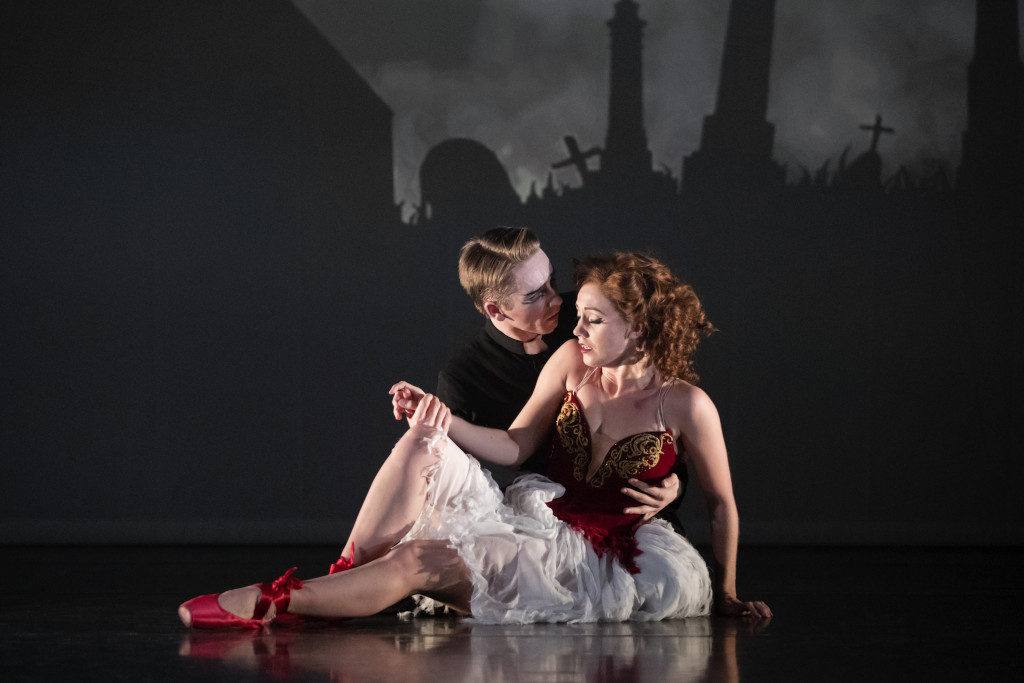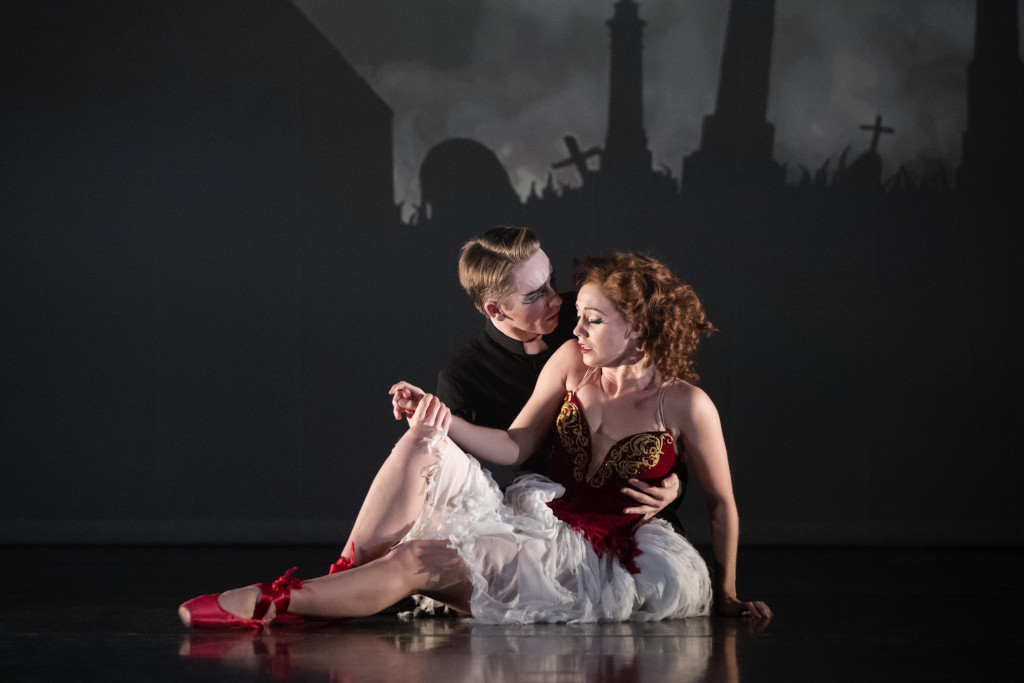
This is a dazzling ballet, chock-full of spectacle, high drama and wonderful dancing. The idea of a girl condemned to dance non-stop comes originally from Hans Christian Andersen’s sternly moral story of a peasant girl called Karen, who is so enamoured of her new red shoes that she dares to wear them to church. She is severely punished for her vanity. The shoes become bewitched; she cannot remove them and they will not stop dancing, even when she has her feet chopped off. In 1948 film director Michael Powell and writer Emeric Pressburger took that idea of cursed dancing shoes and transplanted it into their story about a gifted young ballerina, Victoria Page, who has to choose between her love of dancing and her love for a man. It is their film upon which Matthew Bourne’s The Red Shoes is largely based, though there are elements in the show that harken back to Andersen’s dark fairy tale.
Victoria Page becomes torn between the competing demands of Life and Art. That dilemma is represented very cleverly in Lez Brotherston’s set design, which features a proscenium arch that rotates, revealing the backstage world of real life, and then turning to present the on-stage world of dream-like pretence. For Victoria, the distinction between those two worlds eventually blurs, and reality and fantasy become dangerously mixed.
Victoria is first seen as a talented ingénue, eager to impress the autocratic impresario Boris Lermontov at an upper-class soirée. In last night’s performance, Victoria was danced by Cordelia Braithwaite, who is alternating in this role with Ashley Shaw. Braithwaite is an utterly captivating Victoria, bright-eyed with excitement, fleet of foot and feather-light. Dance would be the sole focus of her attention, were it not that she has become attracted to struggling composer Julian Craster, much to Lermontov’s disapproval. Last night Julian Craster was danced by Dominic North, vividly portraying a young man whose gravity-defying leaps and spins serve to express his burgeoning creativity. It is Julian’s new work that becomes ‘The Red Shoes’, in which Victoria will star. His youthful exuberance contrasts starkly with Lermontov’s stiffly formal hauteur. Brooding menacingly in the shadows, Glenn Graham certainly conveyed Lermontov’s buttoned-up anger at what he sees as Victoria’s betrayal. But Lermontov is too long on the fringes of the action, too remote, to become really interesting. He does have one duet with Victoria, but I would have liked to have seen more of him centre-stage.
Lermontov’s company performing Julian’s Red Shoes ballet brings the first half of the show to a stunning conclusion. It is visually very striking. Featuring a starkly modernist all-white set, somewhat like the pages of a children’s story-book, and with much use of back-lit silhouettes, it has more than a touch of German Expressionism about it. It is a highlight of a show packed with inventive ideas. Indeed, there are moments in the first half when so much is going on that narrative thread becomes somewhat lost.
Julian’s ballet is a hit, and the second act begins with a bright and sunny end of season party at Villefrance-Sur-Mer, where very clever choreography depicts fun on the beach and frolics in the sea. Despite her success and popular acclaim, Lermontov’s jealousy of Victoria’s romance with Julian leads to her being banished from the company. She and Julian find themselves scraping a living in a down-at-heel East End theatre. In this scene we see the shabbier side of showbusiness, but all is not gloom. There is a very funny Egyptian ‘sand dance’ homage to Wilson, Keppel and Betty, music hall stars of the 1930s.
In perhaps the most moving scene, the mobile proscenium arch reveals on one side the solitary Lermontov brooding in luxury in his Monte Carlo office, while on the other side Victoria and Julian are seen together in much less comfortable digs in London. They dance a very touching duet which poignantly depicts their mutual affection, but also speaks of Victoria’s need to return to her first love, ballet. She inevitably returns to Lermontov’s company, with tragic consequences.
The second act is pacier than the first, and the action is more focused. There is a greater sense of sustained energy and narrative flow. However, the tragic denouement is delivered perhaps little too hastily; there is an insufficient build-up of tension before Victoria meets her untimely end. However, that is a relatively minor quibble about a tremendously entertaining show. One of its great strengths is the use of film composer Bernard Hermann’s music. Orchestrator Terry Davies has skilfully adapted many of Hermann’s less well-known works, and the result is so effective that it is hard to believe that these pieces were not originally written as dance music. Above all, the dancing is simply breath-taking, and in particular Cordelia Braithwaite’s magical performance will stay in my memory for a very long time. Tickets will surely be in short supply, but catch The Red Shoes if you can. ★★★★☆ Mike Whitton 4th March 2020


